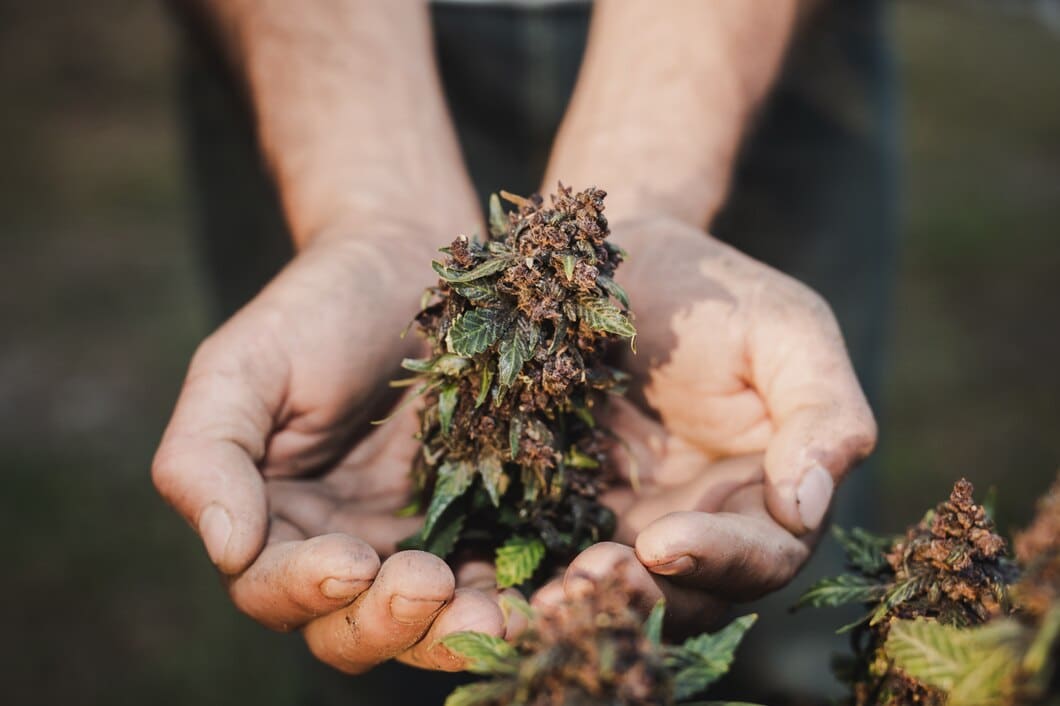How to Get a Cannabis License in California
Everything you need to know about obtaining and maintaining a cannabis license in California.
Background
In California, the cannabis industry is regulated by the Bureau of Cannabis Control (BCC), CalCannabis Cultivation Licensing, and the Manufactured Cannabis Safety Branch.
The state has established a comprehensive regulatory framework for both medical and adult-use cannabis. This guide will provide an in-depth look at obtaining a cannabis license in the Golden State.
Types of Cannabis Licenses in California
Cultivation Licenses
Permits for growing cannabis, with various tiers based on facility size and growing conditions.
Manufacturing Licenses
Allows for processing cannabis into various products, including extracts and edibles.
Retail Licenses
Enables the operation of dispensaries and delivery services for medical and/or recreational use.
Distribution Licenses
Required for transporting cannabis products between licensed facilities.
Cultivation Licenses
Apply through the DCC. Choose from various sizes (indoor, outdoor, mixed-light). Compliance with CEQA, METRC, and state/local laws required.
Back to the TopManufacturing Licenses
Issued by DCC. Tiered based on extraction methods. Type 6 (non-volatile), Type 7 (volatile).
Back to the TopRetail Licenses
Apply through DCC. Need local approval. Annual fee based on revenue tier. Track & trace via METRC.
Back to the TopDistribution Licenses
DCC license allows transport and compliance testing. Requires vehicle tracking, recordkeeping.
Back to the TopHow to Obtain a Cannabis License in California
Comprehensive Research and In-Depth Preparation
- Market Analysis: Assess the landscape of California’s cannabis market. Identify key trends, market size, gross annual revenue, and growth potential to align your business strategy with market opportunities.
- Consumer Insights: Understanding consumer preferences and behaviors is essential. Gather data through market research to tailor your products and services to meet consumer needs.
- Regulatory Proficiency: Stay informed about California’s cannabis regulations and compliance requirements. Regular updates from the BCC and other regulatory bodies are crucial.
- Competitive Analysis: Analyze the competitive landscape to identify your niche. Understanding your competitors’ strengths and weaknesses will help in positioning your business effectively.
- Site Selection: Choosing the right location is crucial and must comply with zoning laws by the local jurisdiction and state regulations. Proximity to target markets and accessibility are key factors.
- Risk Assessment: Identify potential risks in your cannabis business venture, including financial, regulatory, and operational challenges.
- Network Building: Establish a strong network in the industry. Connect with suppliers, legal experts, and other cannabis businesses.
Develop a Solid Business Plan
Create a detailed business plan that outlines your target market, financial projections, marketing strategies, and operational plans. This plan will be a cornerstone of your license application.
Assemble the Necessary Documentation
Prepare all required documents, including business registration, ownership details, and operational plans, ensuring all information is accurate and compliant with California’s cannabis regulations.
Submitting the Application
Access the California cannabis licensing authority’s website to start the application process. Fill out the application form accurately and submit it along with the required documents and fees. The application fees vary depending on the license type. Also, it’s not obligatory to complete the application in one sitting, so take your time and work at your own pace.
For example, a Retailer License (Type 10) required for commercial cannabis activity in California can have an application fee of around $1,000, and a Cultivation License fee can range from $135 to $8,655, depending on the size and type of operation.
License Renewal
Stay ahead of your license expiration date and submit your renewal application in a timely manner, updating any changes in your business and providing all required information. Applying for a license renewal should be carefully done.
Agent Card Requirements
For certain roles in the cannabis industry, an agent card is required. Fulfill all eligibility criteria, including background checks.
Employment Limitations
Be aware of any restrictions on employment within the industry, particularly concerning criminal history.
Agent Card Application
Submit an individual application for each agent, including personal information and necessary documentation.
Payment and Fees
Note: Fee structures are subject to change. Consult the official California cannabis regulatory website for current fee schedules.
Application Fees
The application fee covers the initial costs associated with processing and reviewing cannabis business license submissions in California. These fees vary depending on the type of license and the size of the proposed operation. It’s essential to ensure all application materials are complete and accurate to avoid delays or additional costs.
License Fees
License fees are required to maintain compliance and secure operating privileges for cannabis businesses in California. These fees are determined based on the license type, such as retail, cultivation, or distribution, and are typically due annually. Staying current with license payments is crucial to avoid penalties or disruptions in business operations.
Application Review and Compliance Inspection
After submitting your application, it undergoes a thorough review process. This includes background checks, financial reviews, and compliance inspections. The regulatory body will assess your business plan, security measures, and adherence to local zoning laws. Be prepared for potential site visits and requests for additional information during this phase.
Post-Application Steps
Once approved, commence your cannabis business operations, adhering to California’s ongoing compliance and reporting requirements.
Risk and Compliance Factors From AlphaRoot
The cannabis industry, while burgeoning with opportunities, is not without its complexities and inherent risks. Understanding and mitigating these risks is crucial for long-term success. AlphaRoot, a prominent insurance and risk management firm specializing conduct business in the cannabis sector, sheds light on the key risk and compliance factors
1. Regulatory and Legal Risks
Labyrinthine Regulations The cannabis industry is highly regulated, and compliance with state and local laws is paramount for cannabis establishments. Navigating the intricate web of regulations, which can vary significantly from one jurisdiction to another, poses a substantial challenge for cannabis establishments. Failure to comply can result in fines, license revocation, or legal consequences.
Federal Ambiguity Cannabis remains illegal at the federal level in the United States, despite state-level legalization of recreational marijuana. This dichotomy creates uncertainties and exposes businesses that sell recreational marijuana here to potential federal enforcement actions.
2. Financial Risks
Cash-Intensive Operations Due to federal banking restrictions, many cannabis businesses operate primarily in cash. This not only presents security risks but also complicates financial management and taxation.
Taxation Challenges Cannabis businesses face unique tax challenges, including limitations on deductions and potential audits. Understanding and complying with tax regulations is essential to avoid financial penalties.
3. Security Risks
Theft and Robbery Cannabis businesses are susceptible to theft and robbery due to the high value of their products. Implementing robust security measures at a marijuana cultivation facility, including surveillance systems and secure storage, is vital to mitigate these risks.
Cybersecurity As with any industry, cannabis businesses are vulnerable to cyberattacks. Protecting sensitive customer data and business information is critical.
4. Product Liability and Quality Control
Product Liability Claims Ensuring the safety and quality of cannabis products is crucial to prevent product liability claims. Contaminated or mislabeled products can lead to legal and financial repercussions.
Testing and Quality Assurance Collaborating with reputable independent testing laboratory and facilities, as required by regulations, is essential to verify the safety and potency of cannabis products. Consistent quality control is essential to maintain consumer trust.
5. Market Competition and Volatility
Saturated Markets in regions with a high concentration of cannabis businesses, competition can be fierce. Navigating market saturation requires effective differentiation and marketing strategies.
Price Volatility The price of cannabis products can fluctuate significantly, impacting profitability. Businesses must adapt to market dynamics and price changes.
6. Environmental and Sustainability Concerns
Resource Intensity Cannabis cultivation and processing can be resource-intensive, including water and energy consumption. Businesses need to address sustainability concerns and adhere to environmental regulations.
Waste Management Proper waste disposal and recycling practices are essential to minimize environmental impact and meet regulatory requirements.
7. Talent and Workforce Challenges
Talent Shortages the cannabis industry often faces challenges in recruiting and retaining qualified personnel due to its specialized nature. Employee turnover can disrupt operations.
Training and Compliance Businesses must invest to ensure employees are well-informed about compliance and safety protocols.
Cannabis License in California FAQ
The Bureau of Cannabis Control, CalCannabis Cultivation Licensing, and the Manufactured Cannabis Safety Branch.
Cannabis licenses typically require annual renewal. Check with the specific regulatory body for exact details.
About the Author

AlphaRoot Team
The AlphaRoot marketing team are seasoned experts with deep knowledge of the cannabis industry. Our informative articles help cannabis businesses thrive in a competitive landscape. From compliance to insurance tips, we’re dedicated to providing advice tailored to your needs.
![Ohio Cannabis Laws Explained [UPDATED]](https://alpharoot.com/wp-content/uploads/2023/11/Ohio-Weed-Law.png)



